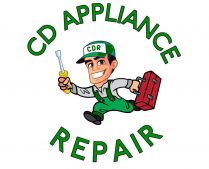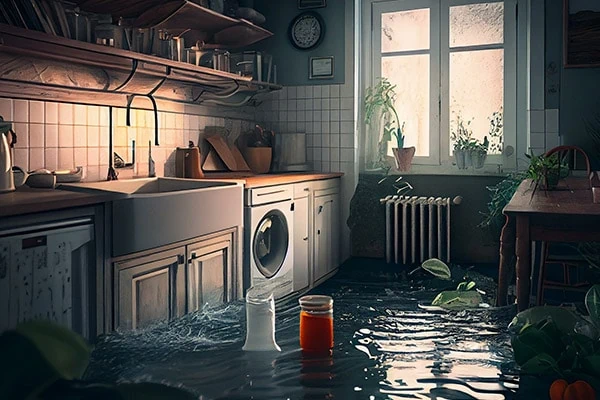Hurricane season, with its potential for damaging winds, heavy rainfall, and power outages, necessitates unique preparations to safeguard not only your home but also your appliances. This guide will walk you through the essential steps to protect your appliances before, during, and after a hurricane.
How to Prepare Appliances for a Hurricane FAQ
Implementing a weather emergency plan is an important part of preparing for a hurricane. This plan not only ensures the safety of your family but also aids in preserving your food and water supply, which can be significantly impacted during and after a hurricane.
Getting Ready for the Weather Emergency
Proactive preparation is your best defense against the impacts of a weather emergency, such as a hurricane. Here are some crucial steps to follow to ensure you, your family, and your home are ready to weather the storm:
- Install appliance thermometers: Wondering “How do I prepare my fridge for a hurricane?” Appliance thermometers in your fridge and freezer will help you monitor if the food is safe during power outages. Aim to maintain temperatures of 40° F or lower in the fridge and 0° F or lower in the freezer.
- Freeze non-immediate food items: Freeze leftovers, fresh meat, and poultry that you won’t need right away—this will keep them at a safe temperature for longer.
- Prepare frozen water containers: Freeze containers of water to help maintain cold temperatures in the fridge, freezer, or coolers during a power outage. Melted ice can also serve as a drinking water source.
- Stock up on ice cubes and gel packs: Purchase or make ice cubes, and freeze gel packs in advance.
- Identify ice vendors: Know where to buy block ice and dry ice in your area.
- Keep coolers handy: These can keep food cold if the power is out for more than four hours.

Should You Unplug Appliances Before a Hurricane?
Yes, you should unplug appliances before a hurricane hits. Power surges are common during hurricanes and can cause significant damage to electronic devices and appliances. By unplugging your appliances, you can help protect them from potential damage caused by these power surges.
However, remember that unplugging your refrigerator or freezer means that the food inside will not stay cold as long. If you decide to unplug these appliances, try to consume, preserve, or safely store perishable food items beforehand.
Actions to Take When Power Goes Out
When a hurricane strikes, your local power grid may be affected, causing power outages that can last from a few hours to several days, or even weeks in severe cases. During these periods, it’s essential to know how to handle your appliances to minimize food spoilage and potential damage. Here’s what to do:
- Minimize opening refrigerator and freezer doors: This practice helps to maintain the cold temperature for longer. A closed refrigerator will keep food cold for about four hours, while a full freezer will maintain its temperature for about 48 hours (or 24 hours if half-full).
- Use dry or block ice for extended power outages: This will keep the fridge as cold as possible. For instance, fifty pounds of dry ice should keep a fully-stocked 18-cubic-feet freezer cold for two days.
- Why do you put ice in the washing machine during a hurricane?: Your washing machine can actually be repurposed as an emergency cooler. You can place your food items inside, then fill the washing machine with ice. The washing machine is designed to hold water and then drain it away, so as the ice melts, the water will be drained out, preventing your food from sitting in a pool of water.

Post-Hurricane Steps
When the hurricane has passed and power is finally restored, it’s tempting to breathe a sigh of relief and think that the worst is over. However, it’s crucial to remember that this stage is just as important as the preparation phase. Properly handling the aftermath of a hurricane, particularly regarding your appliances, can ensure your safety and save you from potential food spoilage and future appliance damage.
Follow these careful steps after power restoration:
- Check the temperature: If it reads 40° F or below in both fridge and freezer, the food is safe.
- Check the freezer’s food packages: If food still contains ice crystals, it’s safe.
- Discard perishable food: Any perishable food that has been in a fridge or freezer above 40° F for two hours or more should be discarded. Remember, never taste food to determine its safety!
Should I Turn Appliances Back on After Hurricane Flood?
If your home has been flooded during a hurricane, it’s crucial to exercise caution when it comes to your appliances. Floodwaters can cause serious damage to the electrical systems of appliances and create a risk of electrical shock. Therefore, you should never immediately turn appliances back on after a hurricane flood.
Before turning any appliances back on, ensure that they are thoroughly dry. This drying process may take several days or even longer, depending on the severity of the flooding. If an appliance has been fully or partially submerged in floodwater, it’s safest to have it inspected by a professional electrician or service technician before turning it back on. They can verify whether the appliance is safe to use or if it needs repairs or replacement.
Protecting Your Home and Appliances
In regions like Southwest Florida where hurricanes are frequent, you must take additional measures to protect your home and appliances from potential damage:
- Document your appliances: Photograph your major appliances from all angles, focusing on manufacturer labels with model and serial numbers. Keep these pictures safe, along with original receipts if available, for potential insurance claims.
- Handle gas lines cautiously: Unless instructed by your utility company, don’t shut off your main gas supply. However, you can turn off the pilot light and individual gas lines to each appliance.
- Elevate portable appliances: In case of potential flooding, move portable appliances like TVs, microwaves, and toasters several feet off the ground or to an upper floor if possible.
Knowing how to prepare appliances for a hurricane is key for keeping you and your home safe. Taking the time to prepare your appliances for a potential weather emergency can save you from unnecessary food spoilage, property damage, and the stress associated with dealing with these issues in the aftermath of a hurricane. This guide will help you to be better prepared for the next hurricane season. Remember, safety comes first. Always heed the advice and instructions of local authorities during a hurricane or any severe weather event. And if you’re dealing with broken appliances after a hurricane, remember the team at CD Appliance is here to help with any appliance problem big or small!

